Sri Lanka!!! There are numerous species from fairy tales in this enchanted realm. The land and its indigenous species’ unfathomable beauty. During the pre-drift age, Sri Lanka and India was part of Gondwana. Then, around 88 million years ago, the huge Indian plate—which includes modern-day India, Madagascar, Seychelles, and Sri Lanka—began to separate from Gondwana and move northward during the drifting period. Australia had already separated and The great Indian Plate had already severed its connection with eastern Antarctica. During this journey towards north, around by 83 million years ago Madagascar got separated from this land mass and welded in Africa. Till this date you can see eastern Madagascar and Western Ghats in india fit like perfect puzzle piece. Meanwhile Seychelles-India-Sri Lanka together continues its Northern drift. Following this, Seychelles got separated from the mentioned land mass around 63 Million years ago leaving Indian and Sri Lanka to travel together and collided with the Eurasian Plate giving birth to the mighty Himalayas. During Miocene epoch, around 25 million years ago Sri Lanka got separated from India. Here to give little background of epoch, its the second smallest geologic timescale. The Time scale goes like, Eon-> Era -> Period -> Epoch -> Age. Miocene epoch is the first Epoch of Neogene Period.
This magical land was intact with India for a long time. India and Sri Lanka have traveled the longest distance from east Antarctica to join the Eurasian plate in Laurasia during the late Ordovician to Early Jurassic period. Blame it on Mannar Golf, which separated this lovely land from India and created an incredibly small yet breathtakingly gorgeous island. It’s astounding that so many endemic and magnificent species have evolved on such a little island. At the same time, they left a few cousins behind in the Indian subcontinent, notably in the southern western Ghats.
These were enough reasons why I was constantly drawn towards visiting this lovely place; the place that I had only discovered through readings and internet images. Hence, I started planning when the moment was ripe. This was going to be a complete solo trip for me and I need to take care of all the details from scratch. Before I knew, I had arrived at Colombo and met Chanaka at the airport, where he was waiting to pick me up and take me around his land’s biodiversity and its charismatic wildlife. We had already discussed about the target species which I was aiming to see for this trip. On the way to Runakanda conservation centre I was amazed by his depth of knowledge about every aspect of the land. Within just few conversation my learning started right from the Colombo airport.
The whole trip was divided in three parts : Low land rainforest ( Runakanda, Shinharaja), Central Highland ( Nuwaraeliya), and Knuckles Mountains. All these three places are at different elevation with their own set of distinct species within.
The trip started with low land rainforest. Few hours drive from Colombo, we reached Runakanda rainforest conservation centre. A rustic, cozy yet well equipped research station, the brain child of Chanaka Udaya. He has converted this two hector land of rubber plantation into a much needed habitat for local species. An inspiring place indeed. Every corner of this centre reflects the passion and knowledge he has within his field.
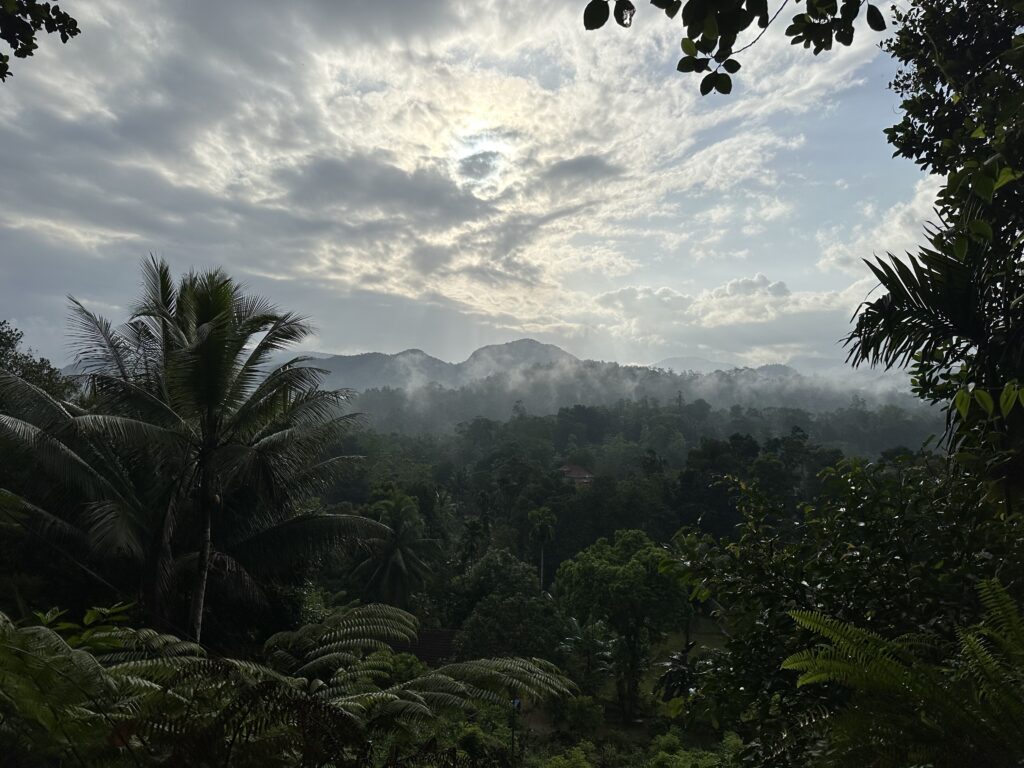
As I reached the centre late in the afternoon, it was decided that we will have a short night walk as my day had started at 5 am back in Bangalore to catch the flight to Colombo. Anyways, it was a buffer day what was planned earlier.
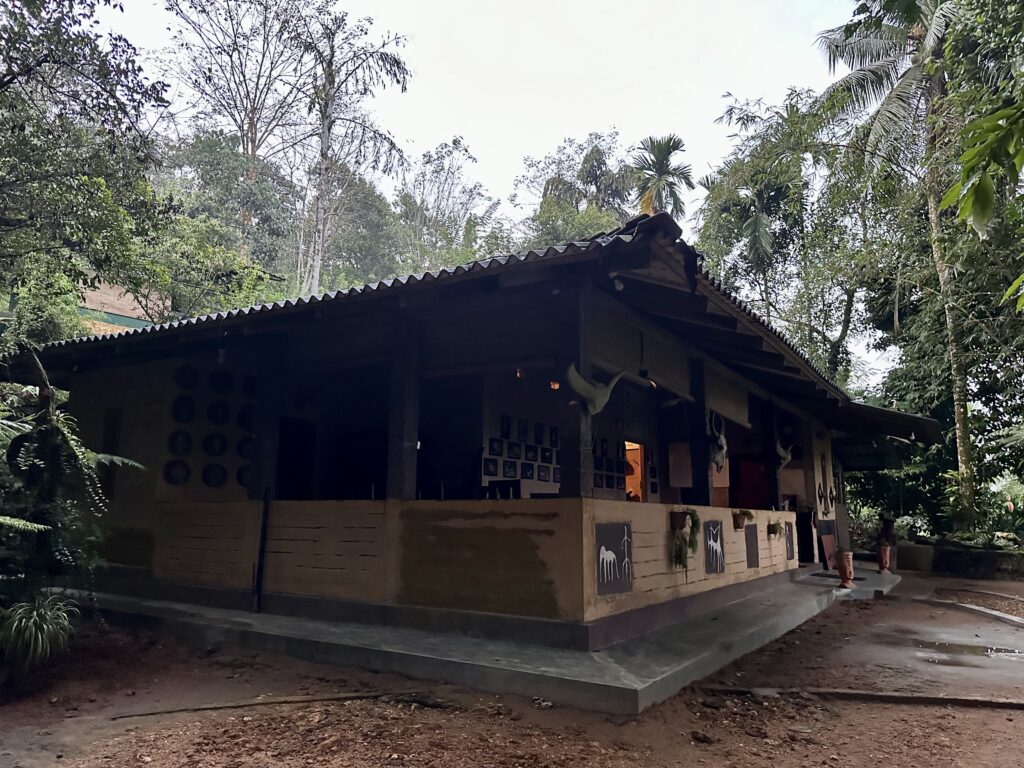
But that easy going day turned out to be so interesting and I had witnessed so many of my target species. This was beyond my imagination. At that point I knew this trip is going to be amazing.
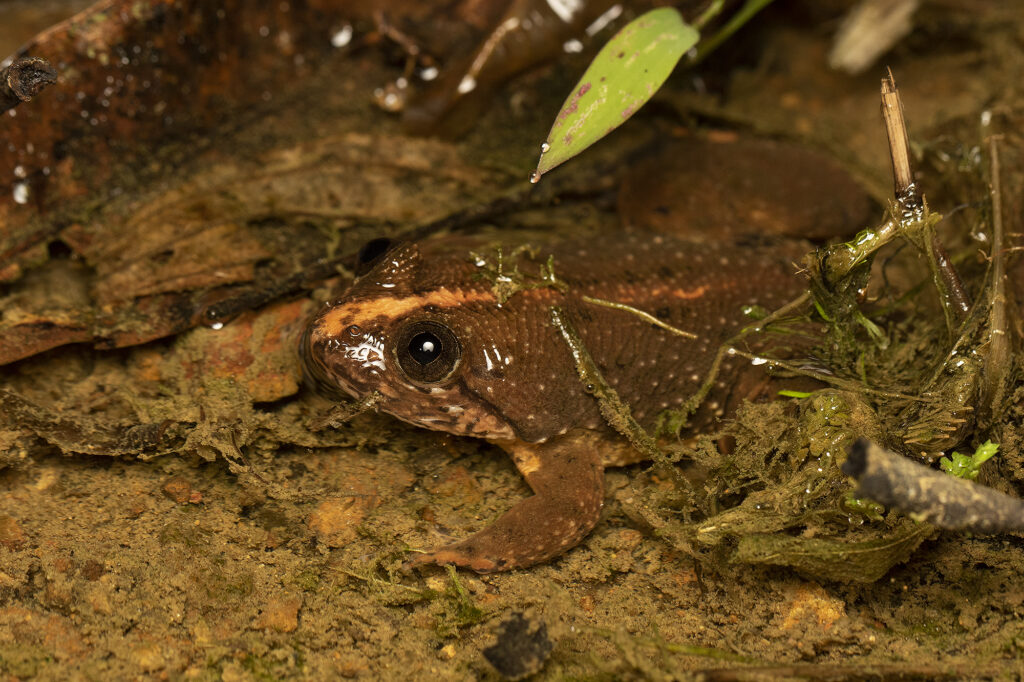
The very moment we stepped out to start our night walk, we got to see Lankanectes corrugatus, commonly know as Sri Lanka wart frog or corrugated water frog. It didn’t have any sub-species and for a long time it was monotypic till 2018 when Lankanectes Pera was described from knuckles mountain range. Which we will see later in this series when I tell you about knuckles mountains.
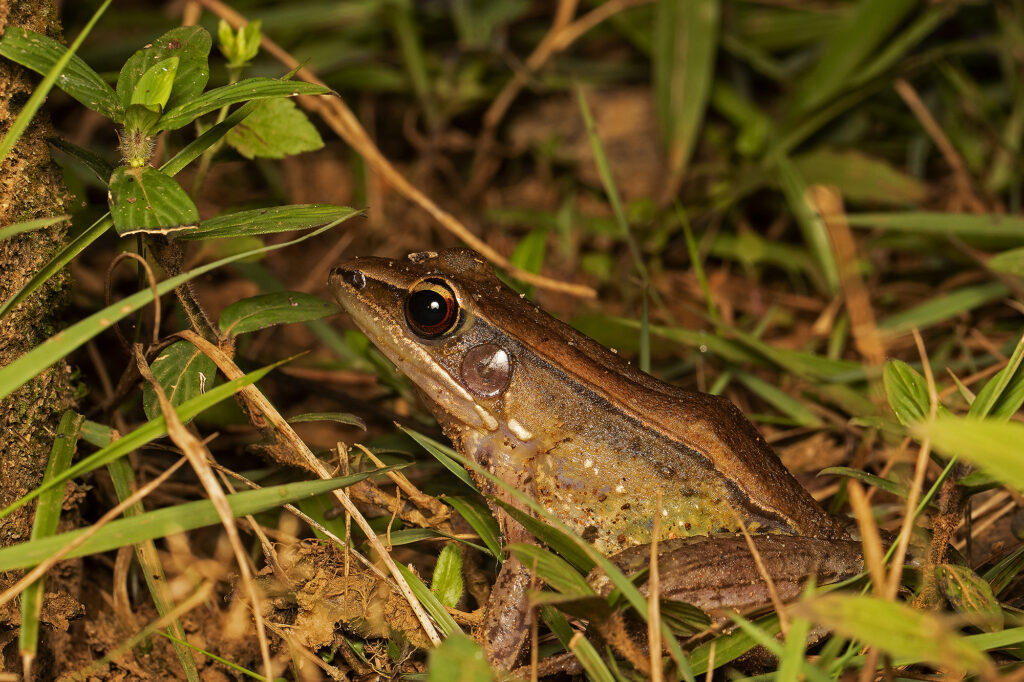
Just when I got down from the vehicle to start herping, I waw someone jumping in the field. Thats a Indosylvirana Serendipi or Sri Lankan golden-backed frog.
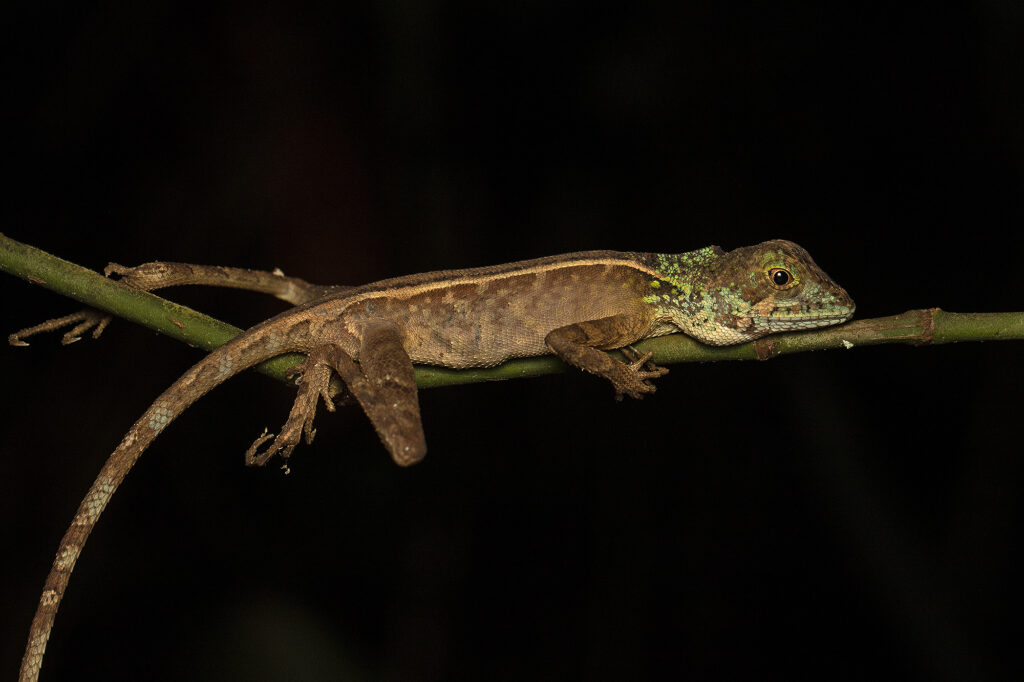
Its commonly known as brown-patched kangaroo lizard, Sri Lankan kangaroo lizard or Wiegmann’s agama. The remarkable aspect of it is its hind legs; which are way too long in comparison with its front ones. Thats why it garnered its name as Kangaroo.
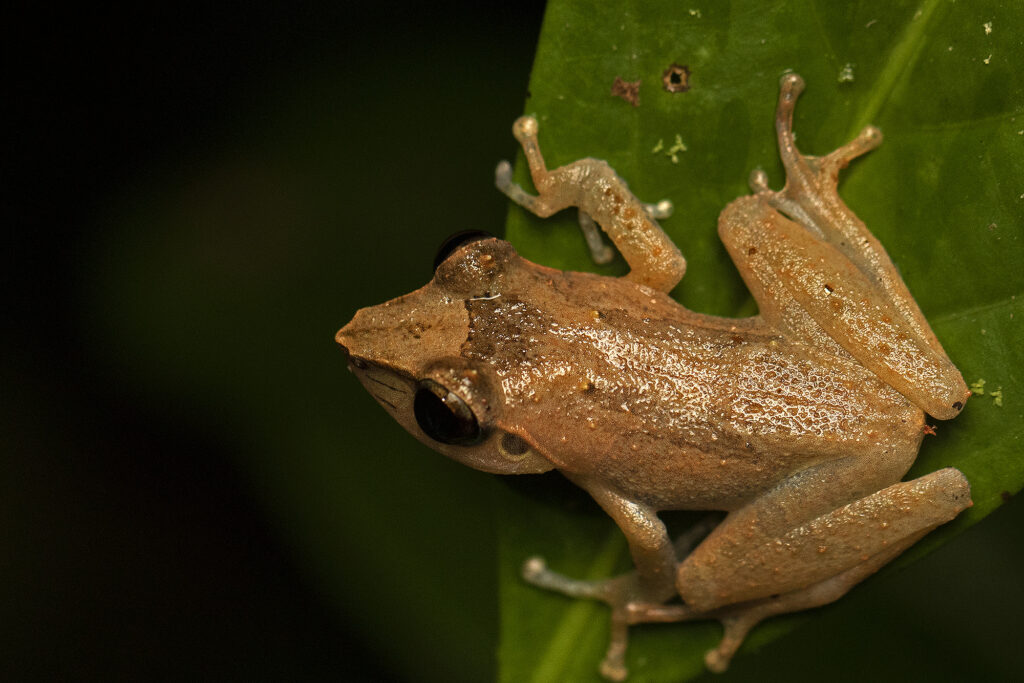
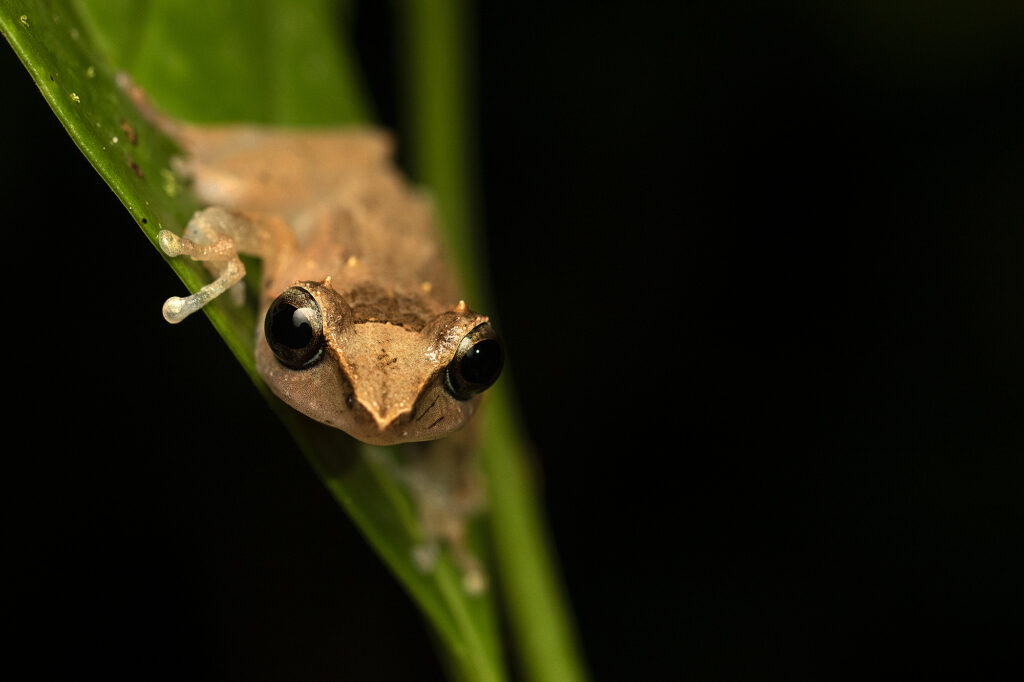
Pseudophilautus Schneideri, commonly known as Schneider’s shrub frog and that is endemic to Sri Lanka.
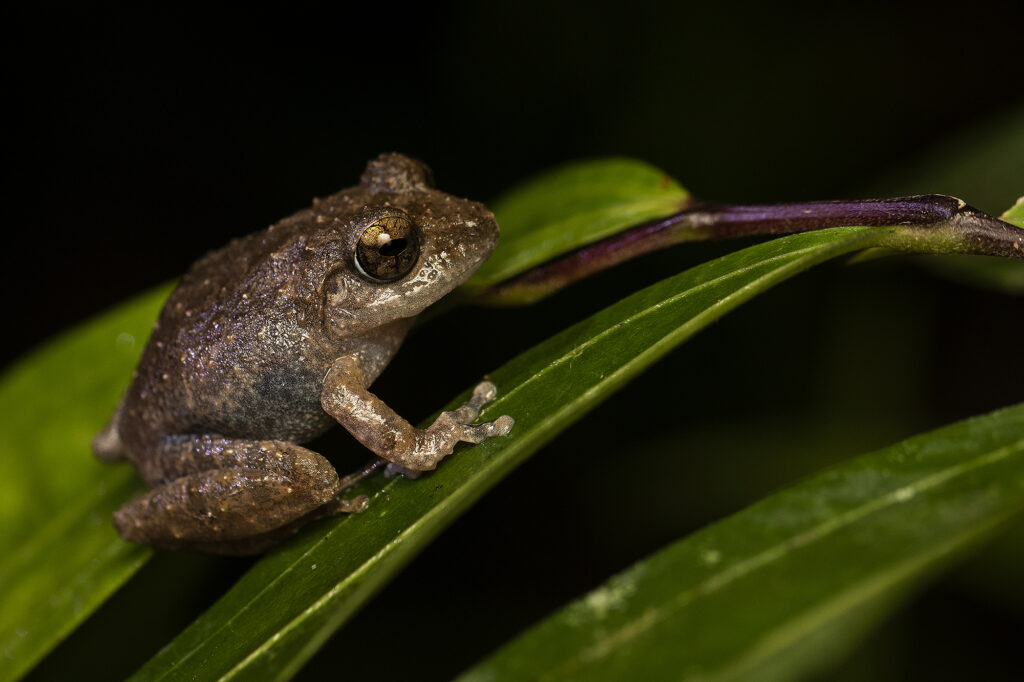
Commonly known as Kandian shrub frog is a species of tropical moist lowland forests. They are one of the victims of habitat loss.
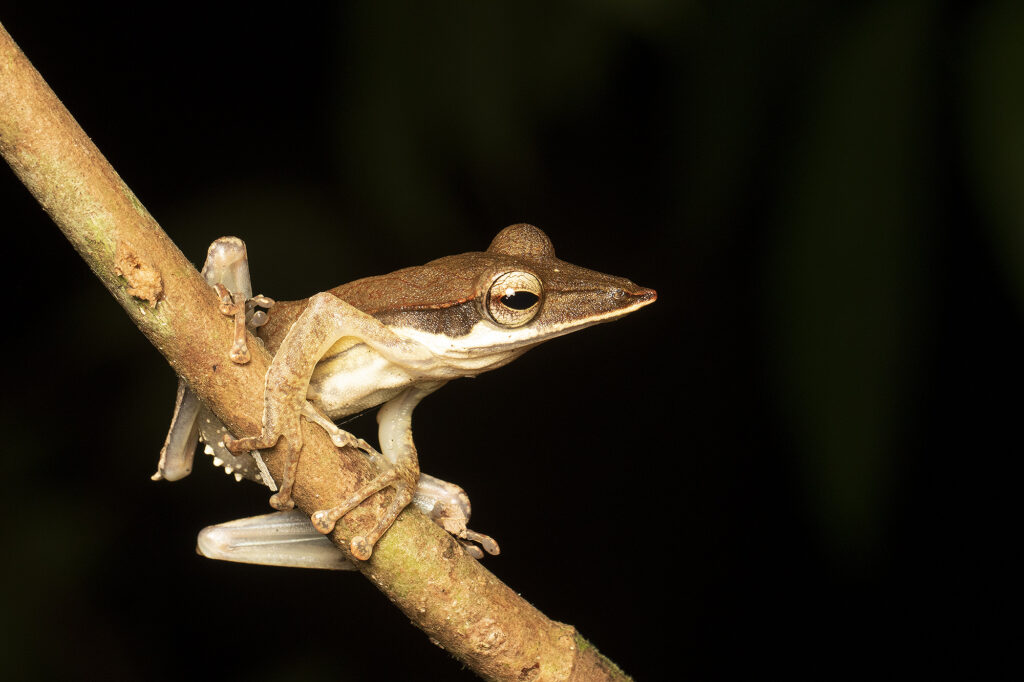
Then there came the star of the evening; which was such a pleasant surprise. I never expected to see it on my very first evening. Taruga longinasus, commonly know as southern whipping frog or long-snouted tree-frog. It took me a few moments to realise what I was seeing it. This image is really precious to me since in order to capture an eye level shot, I had to climb the unclimbable and half of my body was dangling in the air.
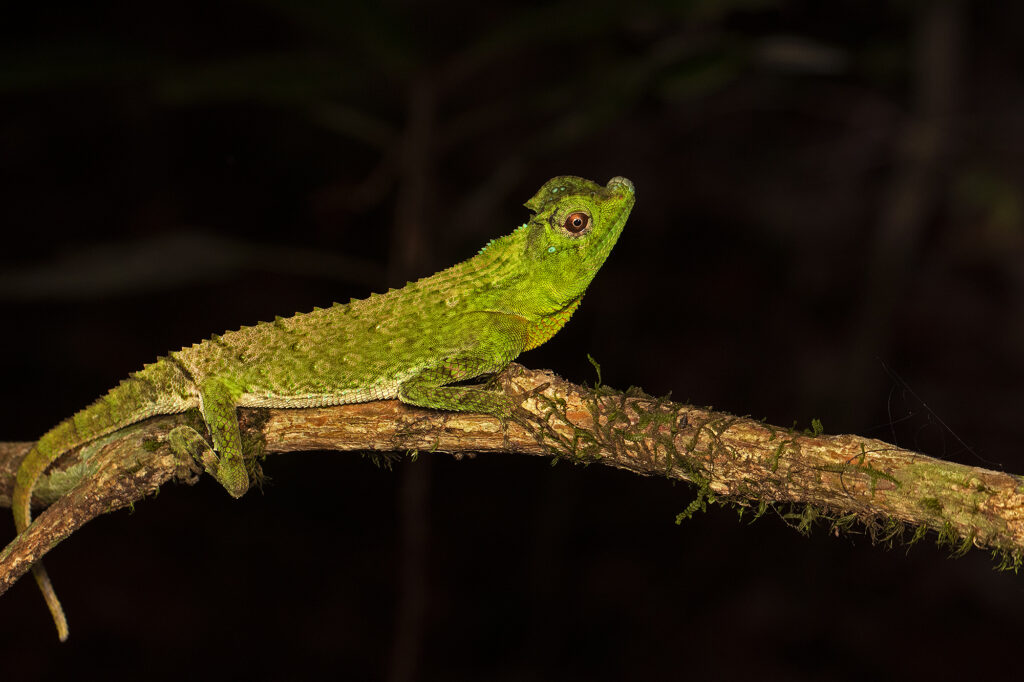
In few moment time my inner monologue went, “wait a minute. Is this what I am looking at or I am hallucinating.” Its a Lyreshead lizard, commonly know hump-nosed lizard or hump snout lizard. It was definitely a target species for me and there it was
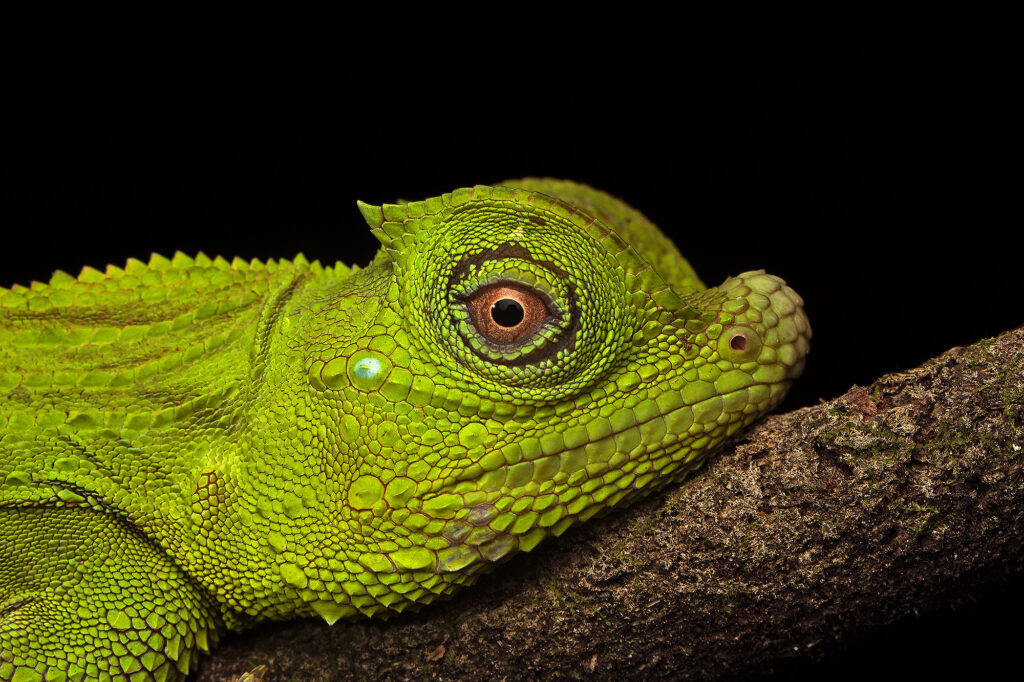
If dragons were not a mythical animal and was real then they they would definitely resembled this.
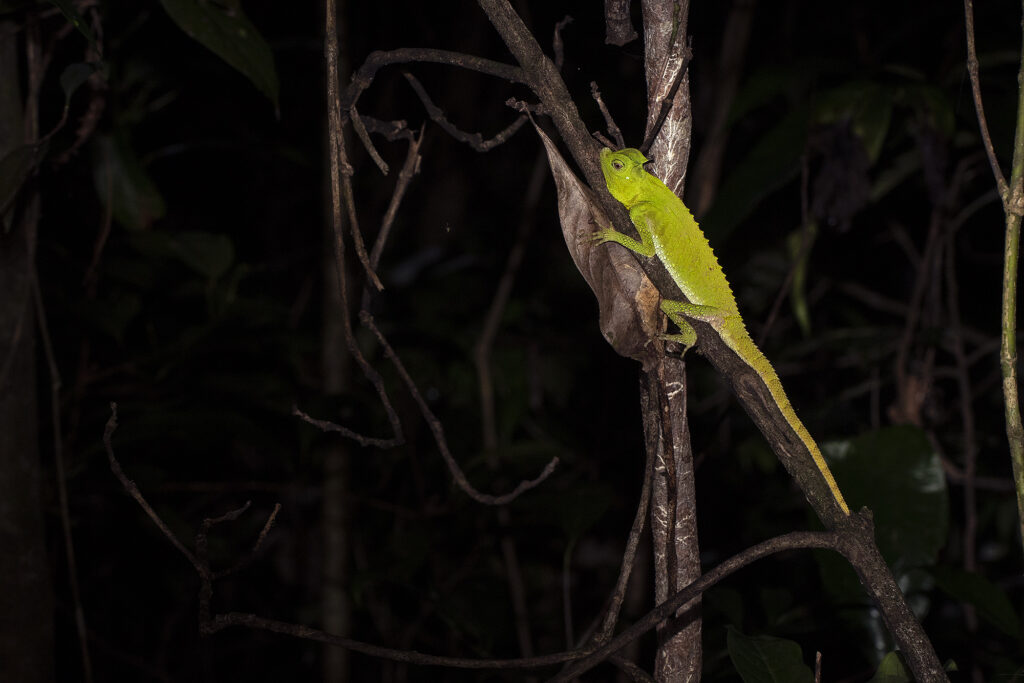
They were everywhere. While you are shooting one, another is observing you.
Just when I thought that day one was so exciting, next day was much more exceptional. It was mostly dedicated to Whistling Lizard and my favourite snake.
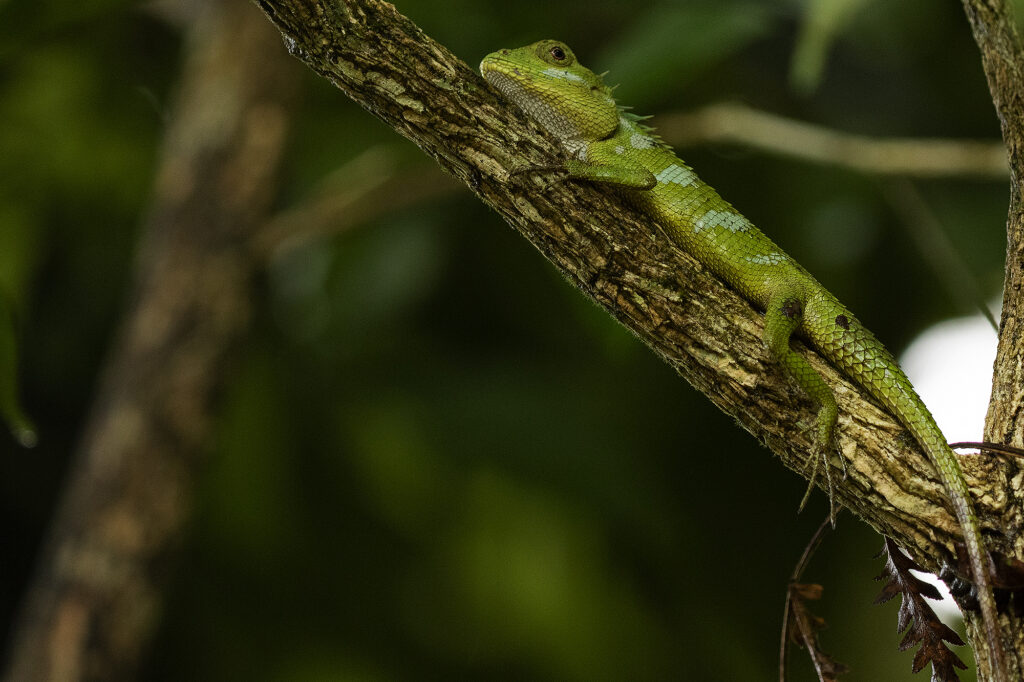
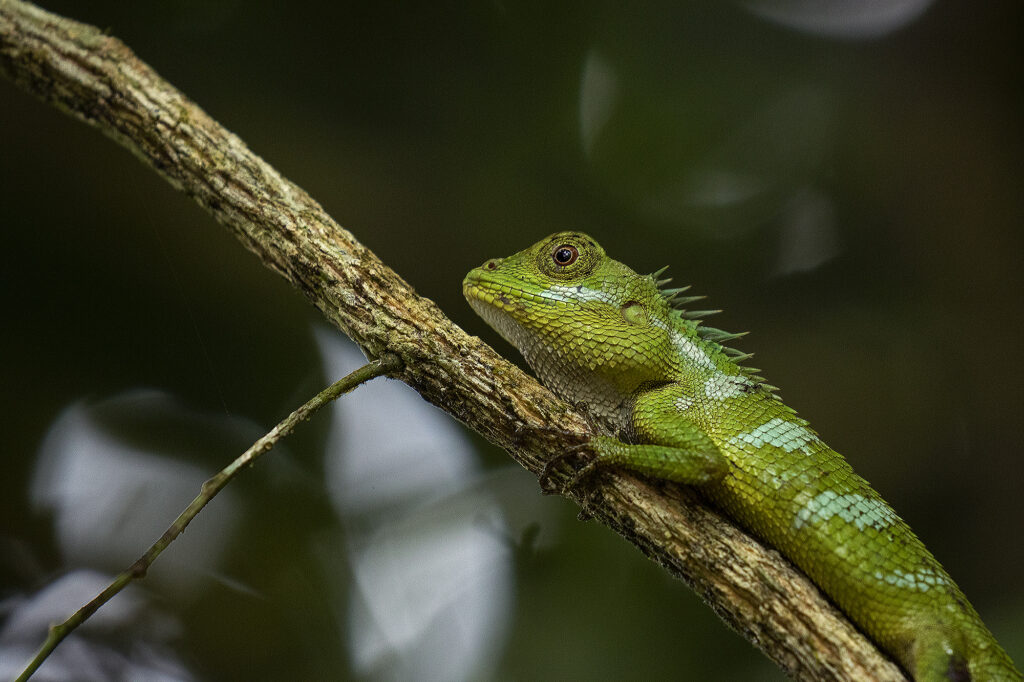
The morning started with a wonderful sighting. The moment I came out of my room I saw this beautiful Calotes Liolepis, also commonly known as The whistling lizard or Sri Lanka agama.
In Sri Lanka, 17 families of Agamidae are there, out of which 14 are endemic to Sri Lanka.
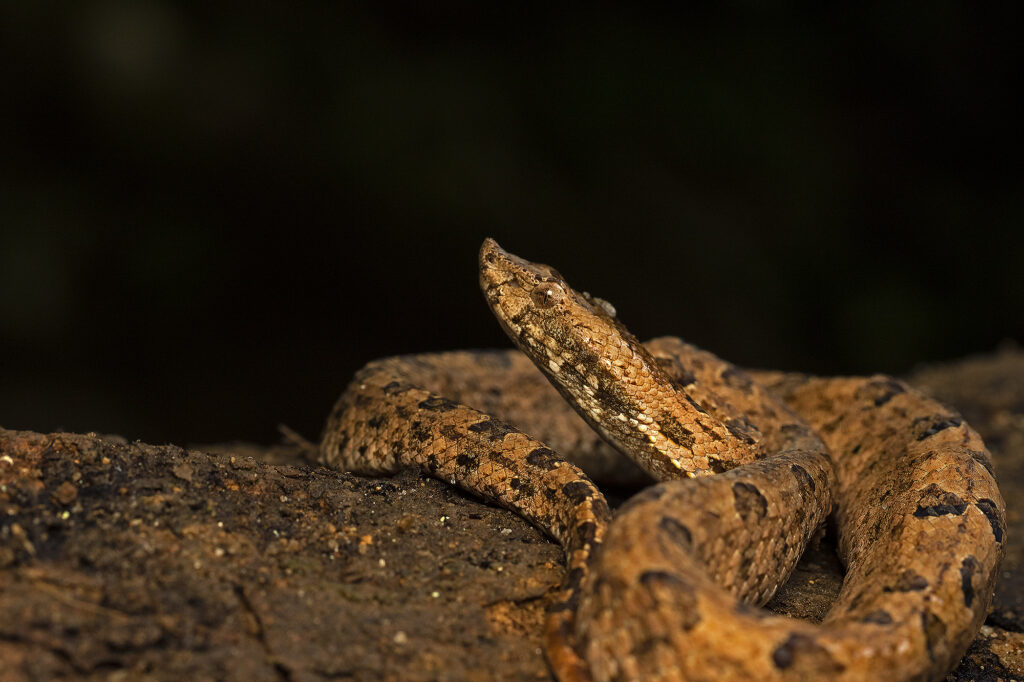
My snake journey for the trip was opened with this amazing Hypnale hypnale, which is endemic to Indian Western Ghats and in Sri Lanka. It was like seeing an old friend after a long time. I saw this in a dramatic event approximately twelve years ago back home in Western Ghats. That which was my first experience of rainforest , and it marked the beginning of a love story. As a result, it will always occupy a special place in my heart.
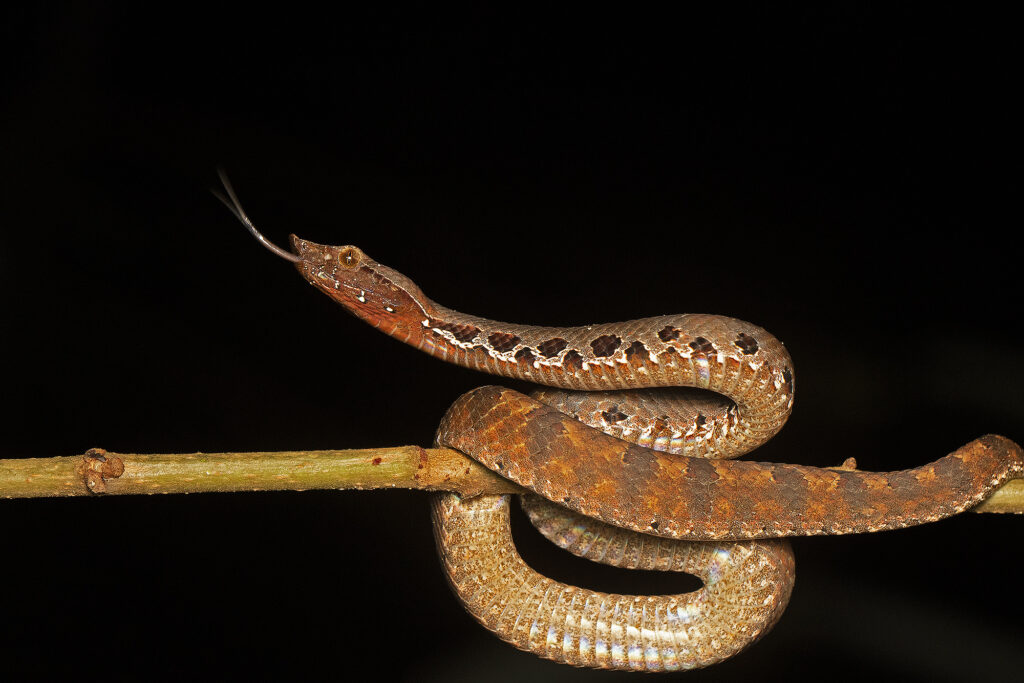
There had been no rain on that beautiful starry night. While making images of one of the Boiga (cat snake), I observed a wildly flickering torch from afar, realising Chanaka had found something really interesting. I saw what it was after performing balancing acts between the rocks.
The trip to Sri Lanka removed a hurdle for me to begin identifying species by their scientific names. I used to struggle a lot before. This occurs while herping with someone who solely use the scientific names and will ensure you get it right. Hence I knew this as Hypnale zara before I knew its common name low-lands hump-nosed pit viper. A pit viper species, endemic to Sri Lanka.
There was another, 3rd species of hypnale you find in Sri Lanka, known as Hypnale Napa. I was not lucky enough to see that. My whole stay in Sri Lanka was completely dry with the EL Nino effect. That made it more challenging to spot the species.
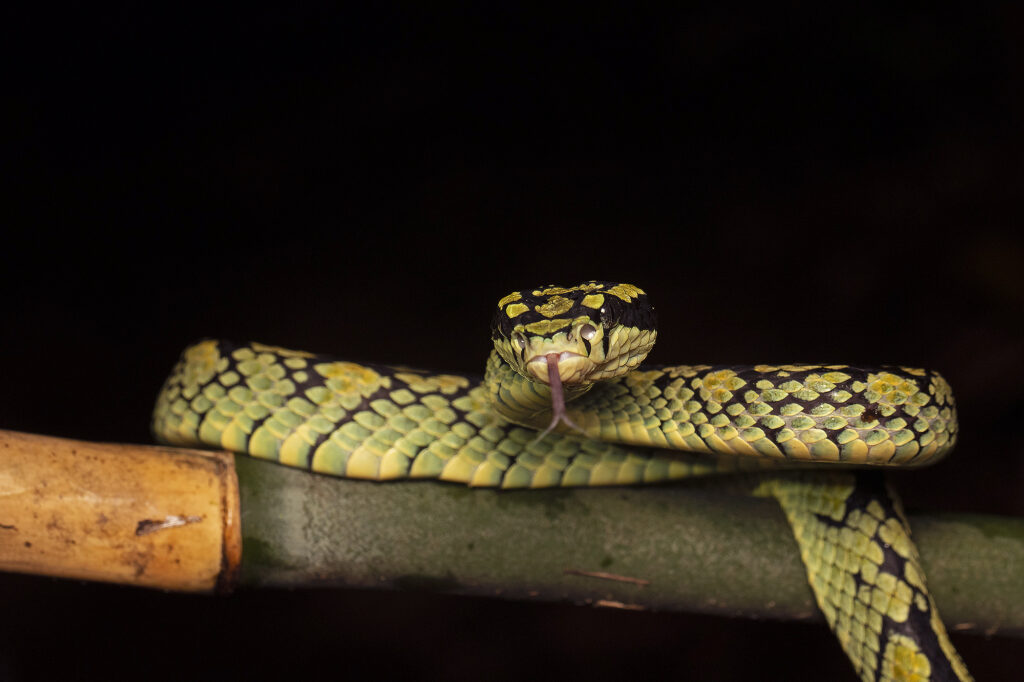
Now the most esteemed species of the trip, which was on the top of my wish list. Sri Lankan Green pit Viper. My whole trip would have been a disappointment, if I hadn’t seen it. In fact it took a lot chance and effort to find one in that dry and aridity without a single drop of rain under a sky full of stars. But chanaka had made sure that I cover a lot more ground and nearly all of my target species. He has undoubtedly worked hard on this. I’m incredibly grateful to him.
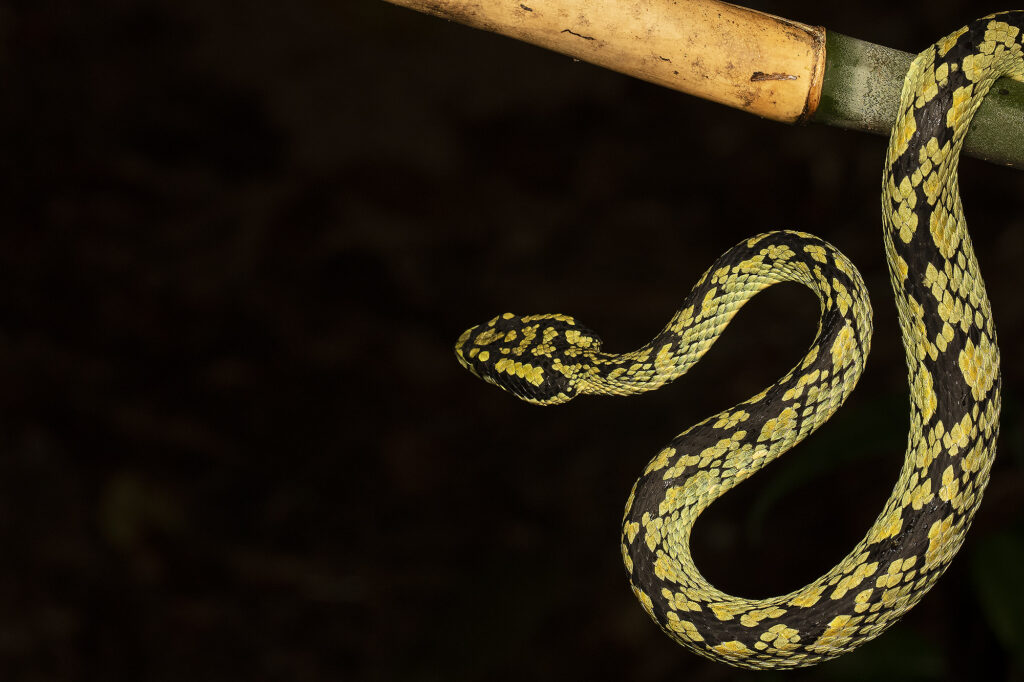
Meanwhile another magic unfolded, which I have been telling in bits and pices earlier in this writing. Until then I had never seen three species of cat snake (Boiga) in a single day. This magic can only occurred in this incredible land.
First in the list is the Boiga trigonata (Common Cat Snake), a mildly venomous colubrid snake found in south eastern Asia. That was not the first time I was seeing it. I had seen this many times back home in western ghats. But seeing Bioga is a delight to me, no matter how many time i have seen them in the past.
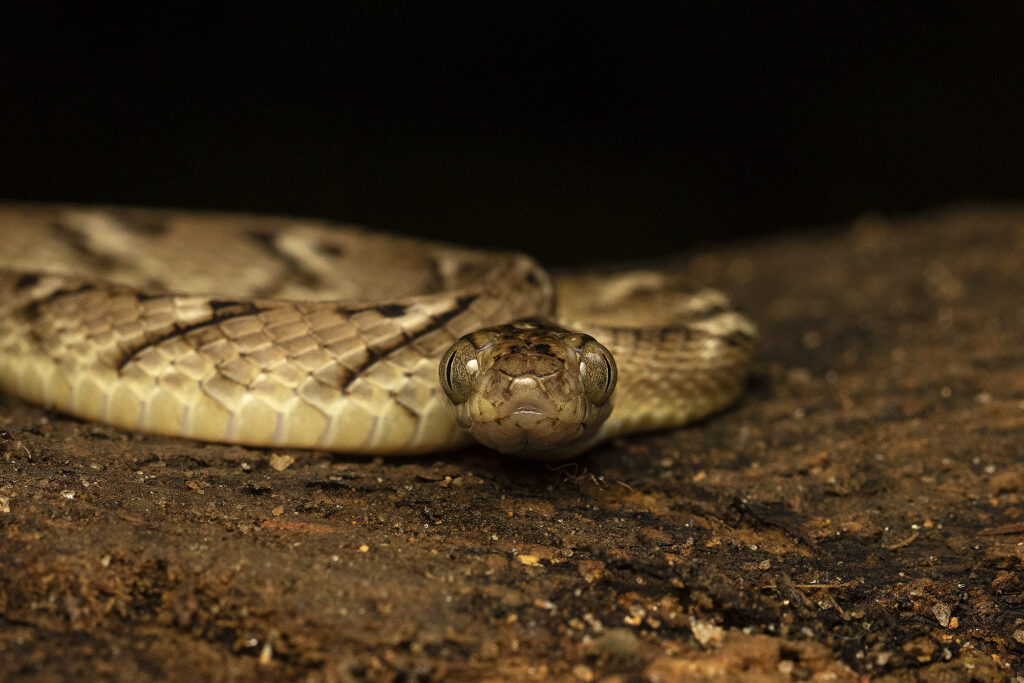
Boiga Trigonata’s conservation status is least concern and found commonly in Pakistan, Iran, Afghanistan, Bangladesh, Sri Lanka, Nepal and, in India its found all over except for the north eastern states. The name Gamma is due to the Y shaped or Gamma shaped marking on the head. “Why cat snake ?” My daughter asked, “do they meow, so you call them cat snake.” No, Its called cat snake because its eyes resembles that of a cat. It’s a nocturnally active and arboreal species often found is low vegetation around the bushes. Its venom is capable of paralyzing small prays, like lizard, small rodent and small birds.
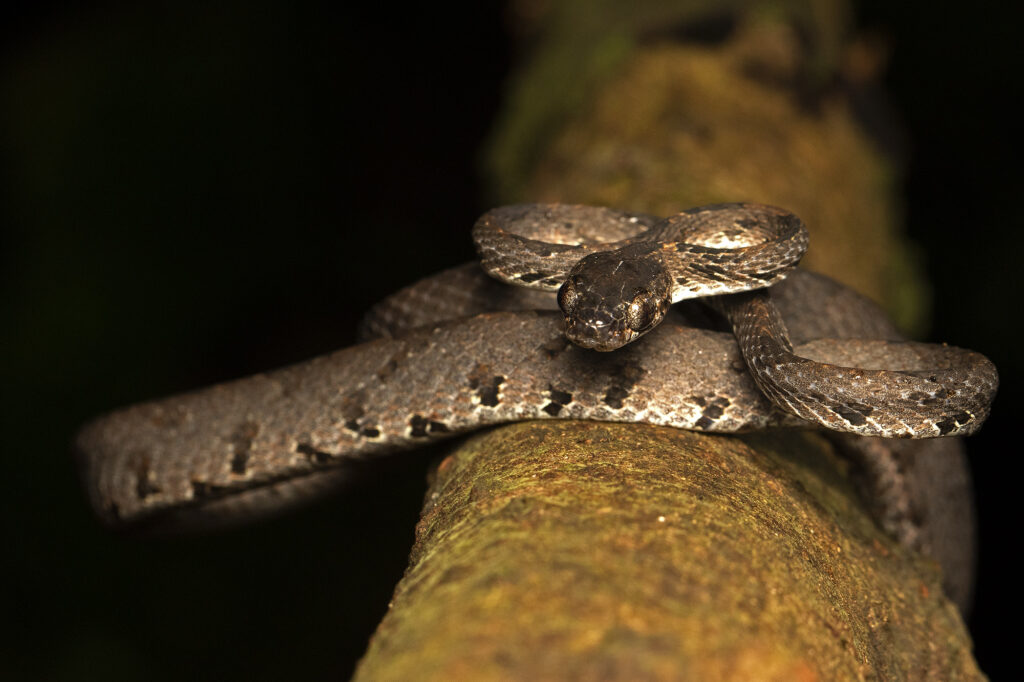
Then comes the native species, Boiga barnesii, commonly known as Barnes’ cat snake, endemic to Sri Lanka. The conservation status of it is vulnerable. This is the smallest cat snake in Sri Lanka and named after Richard Hawksworth Barnes. While making images of it I got that batman call from Chanaka’s flash light and had to abandon it to find another jewel of Sri Lanka, Hypnale zara- low-lands hump-nosed pit viper. The reason why I don’t have a decent image of Boiga barnesii, .
Then the third one Boiga ranawanei, commonly known as Ranawana’s cat snake. A native species and endemic to Sri Lanka.
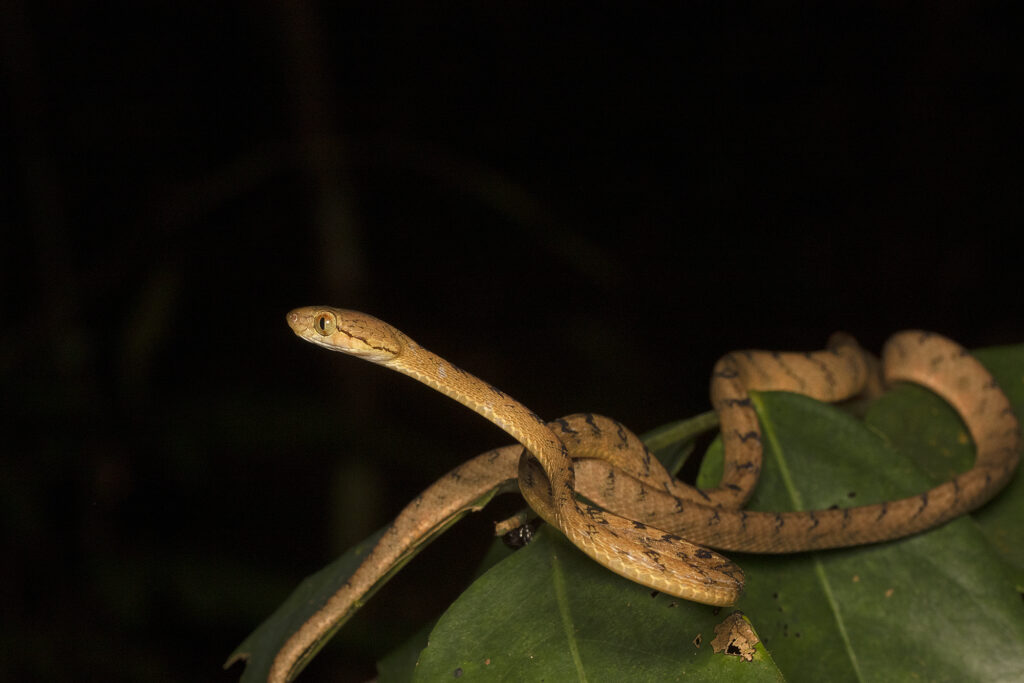
Immediately after we had finished making images of low land humped nose pit viper, we scan near by bush again where we saw the Boiga barnesii sometime back. we didn’t get it. Fortunately, even better we got this one.
Boiga Ranawanei was the reason, we could call Boiga Beddomei is endemic to Western Ghats. Let me explain how. Earlier these two were the same species and spread across Sri Lanka and Western ghats in India including Boiga Flaviviridis. Later Scientists with various morphological research arrived at different taxonomy for this and separated them in three different species. The population found in Sri Lanka had been included in Boiga ceylonensis group. That makes Boiga Ranawanei endemic to Sri Lanka and Boiga Beddomei endemic to Western Ghats. The third species which was segregated from this, is Boiga Flaviviridis, which is found across India.
Till this point I have only covered the low land species. Our next destination was central highland Nuwaraeliya. First look of this place remind me of Munnar back home, though it is 200 m approximately higher elevation than Munnar. The species are completely different here than the low land.
The day we reached Nuwaraeliya, that evening my first target species was ticked off. It was ceratophora stoddartii, commonly known as Rhino horned Lizard.
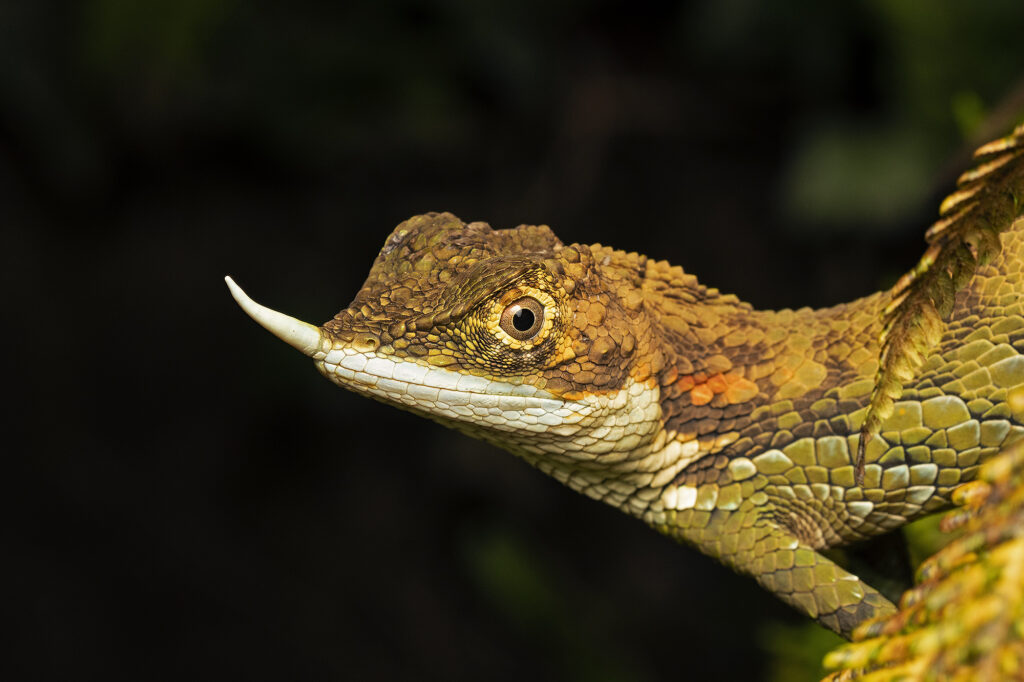
Ceratophora genus of the Agamid, which consists of possible kind of horned lizards are endemic to Sri Lanka. I wanted to see all of them, Ceratophora Stoddartii- Rhino horned Lizard, Ceratophora aspera – rough-nosed horned lizard, and Ceratophora tennentii – leaf-nosed lizard. I saw two of them and couldn’t see rough-nosed horned lizard. Seeing these two was also a huge achievement for me. The rough-nosed horned lizard shall draw me back to this magical land again.
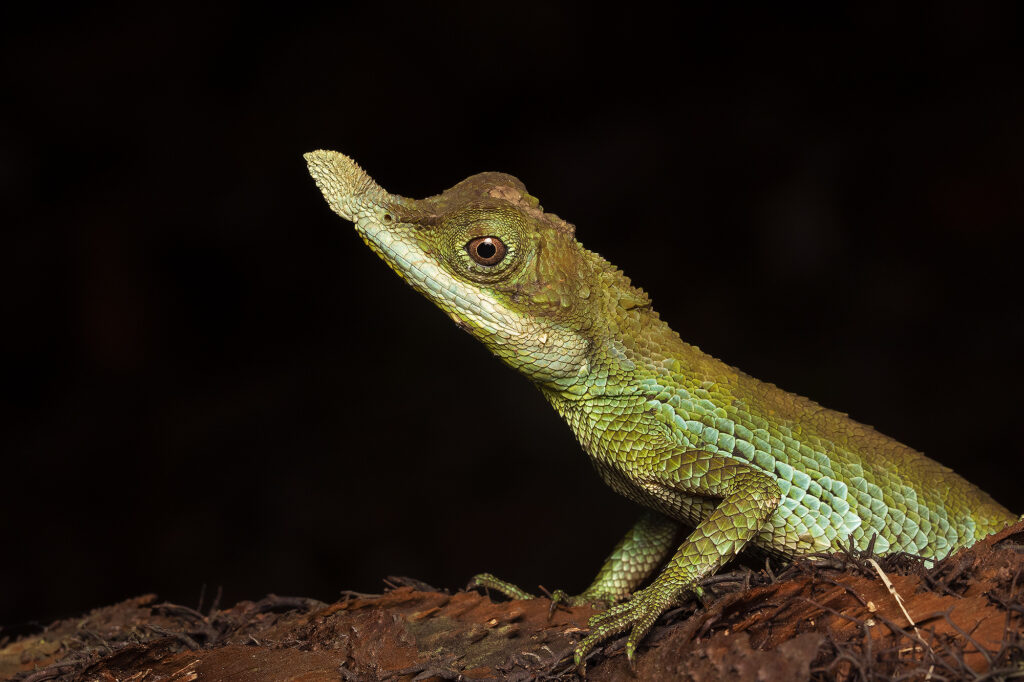
Just mentioning Ceratophora tennentii here as we are talking about Ceratophora genus. Though I saw this in my next destination in knuckles hill. It is found in wet tropical montane forest at an elevation of 760–1,220 m. This is much lower elevation from Nuwaraeliya where I found Ceratophora Stoddartii.
Both the species of this genus are critically endangered, mostly due to habitat lose.
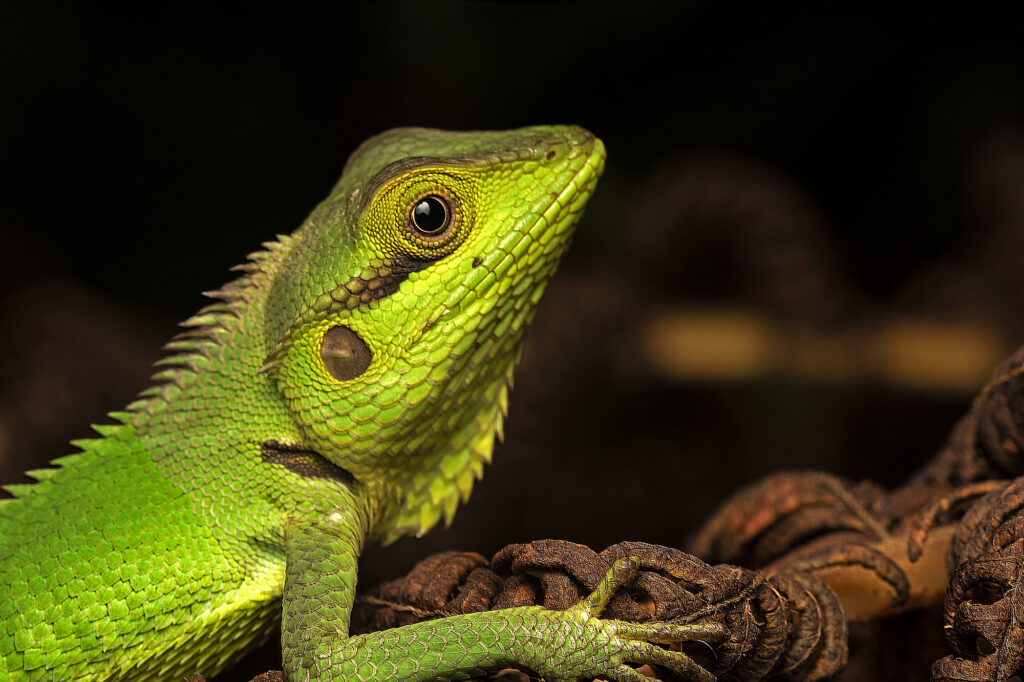
Calotes nigrilabris, commonly known as the black-cheek lizard, is another Calotes, endemic to Sri Lanka.
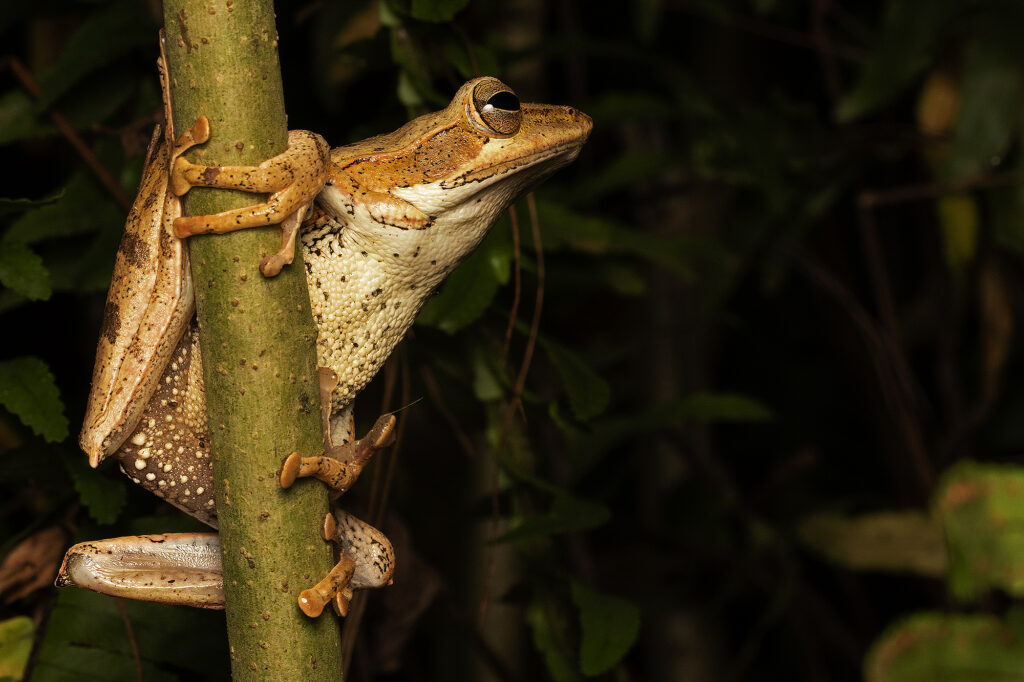
I had already seen the Taruga longinasus in low land on my first night. This is Taruga Eques the high land version of the tree frog. The Taruga genus is the foam nesting tree frogs, endemic to Sri Lanka. They belong to Rhacophoridae with conservation status as endangered due to the obvious reason of habitat lose.
Next morning we met one person who had created a natural habitat for frogs and amphibians in his land. This he achieved by without using any chemical or pesticide. So when the surroundings is lashed with chemical usage the species prefer to flourish in his land or you can say a mini forest within.
Once we entered, we encountered Cophotis ceylanica or commonly known as pigmy Lizard. Perhaps the name was derived due to the tail being smaller in proportion to its body.
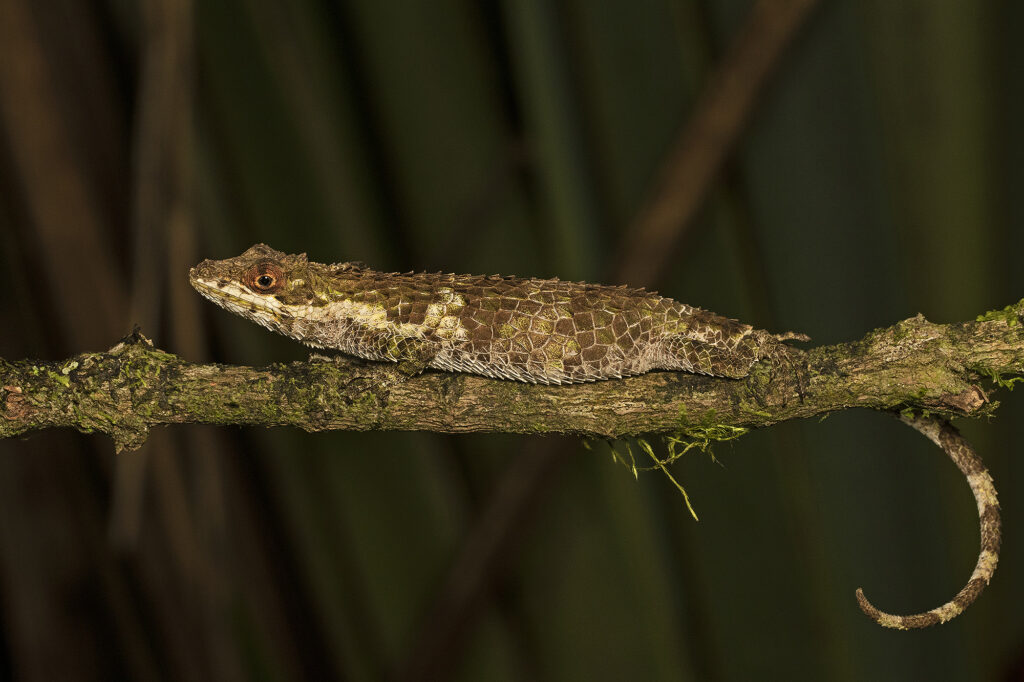
Yet again another endemic species to Sri Lanka, rather they are found only on central highlands.
There is another Cophotis like Lizard found in Knuckles mountains range and believed to be the same Cophotis ceylanica. But after detailed Morphological studies, it was found that its a different species with same genus, which is called Cophotis dumbara.
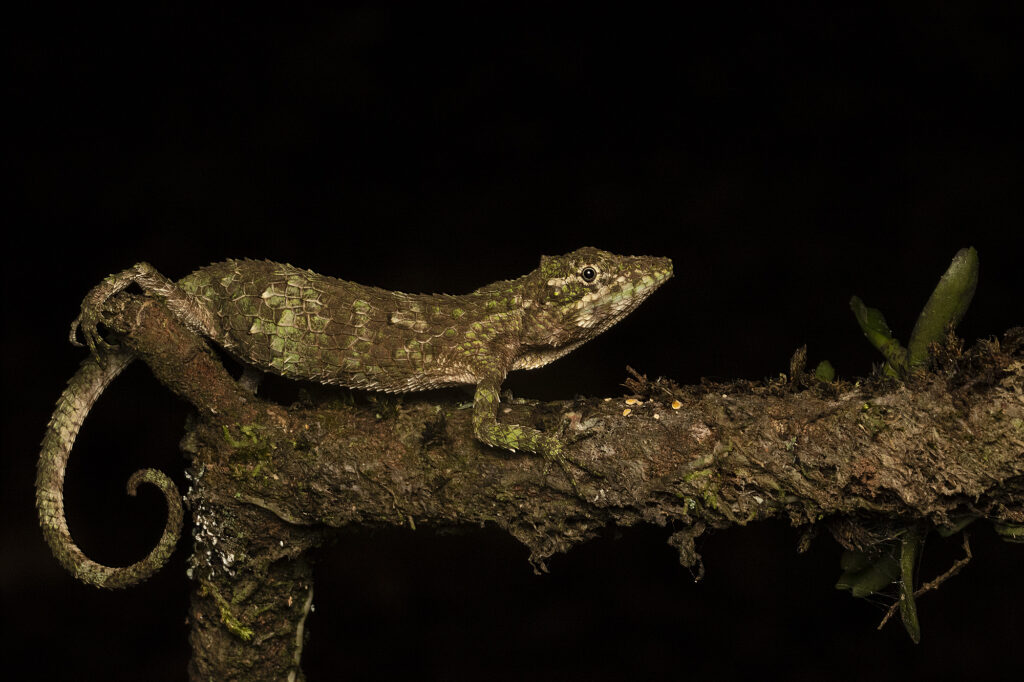
Its so fascinating to observe the different species from the same genus. As the ecosystem changes, so does the species. This is the beauty of evolution. it’s unfortunate that they are listed as critically endangered.
The next astonishing one what I saw in that protected mini forest is the Uperodon palmatus or commonly known as Parker’s dot frog/ Parker’s globular frog. This reminds me of the Melanobatrachus indicus or commonly known as galaxy frog or Black Microhylid Frog, endemic to southern western ghats, mostly found and famous in Munnar. Here is yet another similarity of the elevation of Muunar and Nuwaraeliya. But scientifically I couldn’t find any connection between Uperodon and Melanobatrachus genus. If anyone can refer to any writeup which establish any connection between them then I would be obliged.
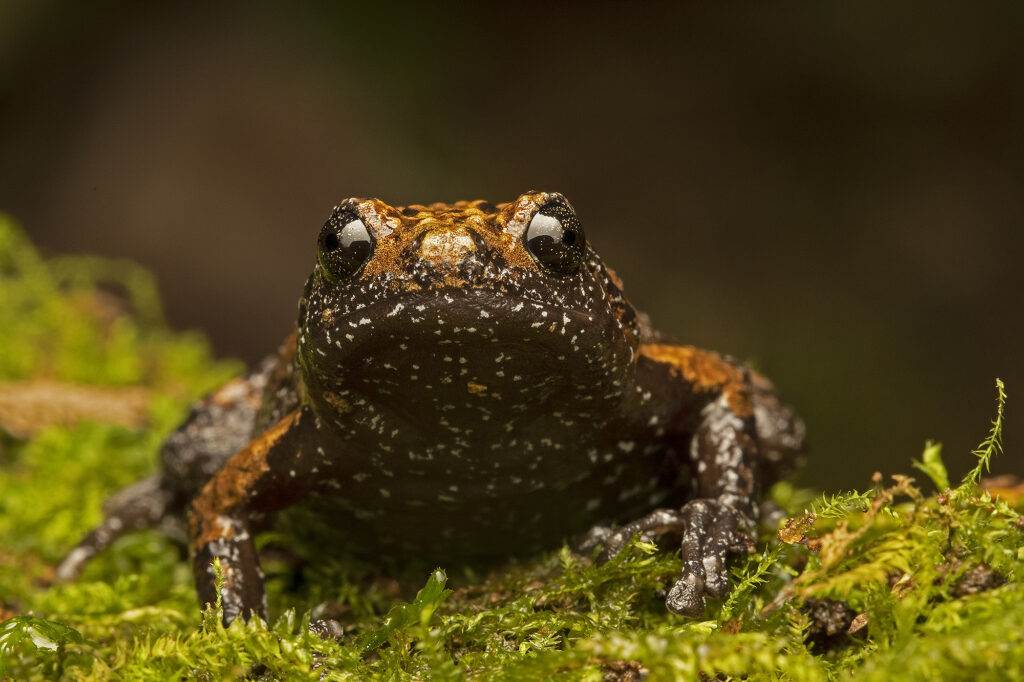
Next destination in Nuwaraeliya was bit of an uphill trekking to get into a place near to the stream where we got few rare frog species. Initially it was started through a tea plantation and eventually got into a forest, which required us to climb a bit of stiff rocks to get into the appropriate place.
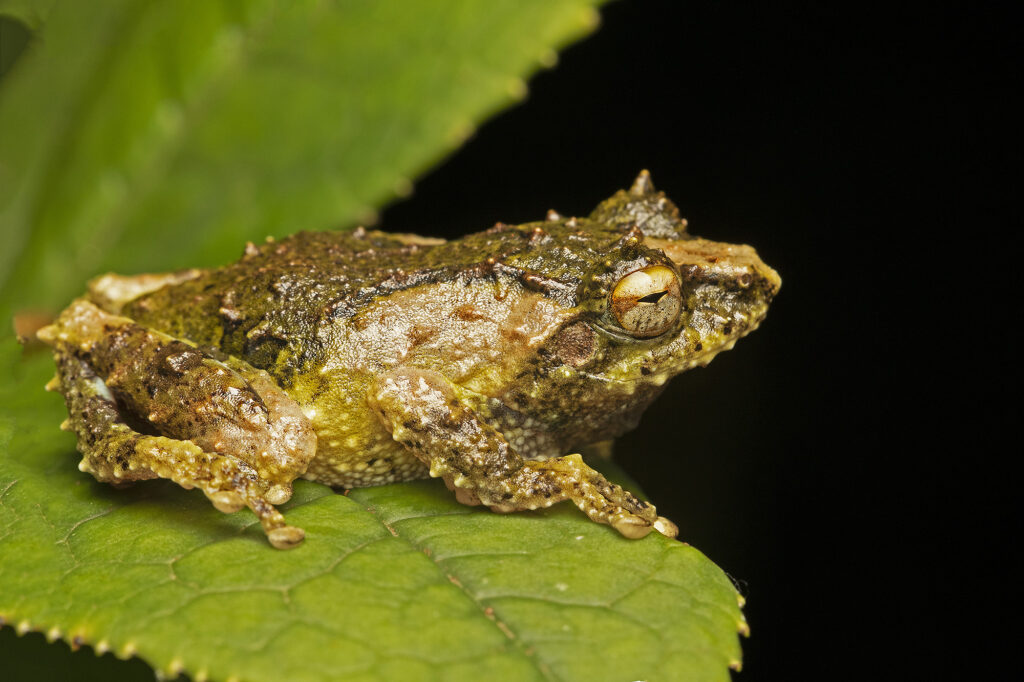
The first one we saw is Pseudophilautus schmarda which is commonly know as Sri Lanka bug-eyed Frog. Not sure why it is named like that. May be due to the spikes above the eyes. This is again an endangered species and endemic to central highlands in Sri Lanka only. It has a cousin in knuckles mountain range known as Pseudophilautus hankeni. The species are separated due to the elevation difference also for the Mahaweli River valley. Its very unlikely that any of them could have crossed the valley.
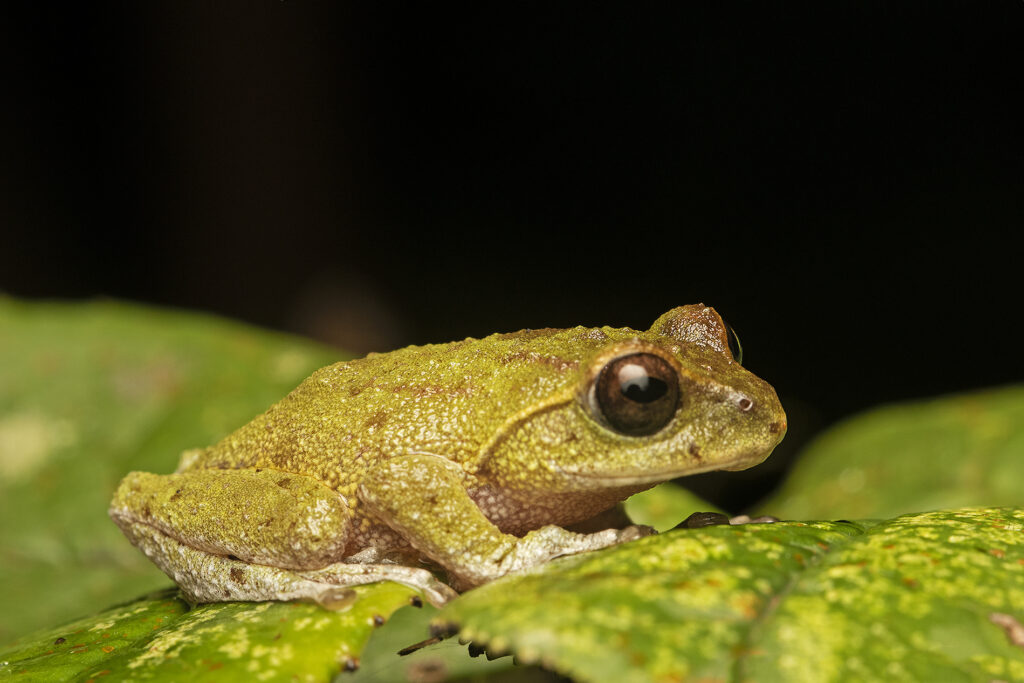
The next one we saw an amazing beauty, the Pseudophilautus viridis, commonly known as dull-green shrub frog. Majority of the Pseudophilautus in Sri Lanka has a bit of divers oviparous behaviour, the way they lay eggs for reproduction. Majority is on the leafs of under-storey shrub. Thats why they are called shrub frogs. But few Pseudophilautus like Pseudophilautus viridis has a different behaviour. They dig the ground to make a nest, then lay eggs there, followed by scraping the soil to burry the eggs, somewhat like turtles. The difference is, it has a pre-processing ritual before depositing the eggs in the nest. The female try to camouflage the eggs by mixing the eggs in moist soil to give it a coat to hide the original white colour of the eggs. Then she deposits all the eggs in the nest and push the soil over it using her snout.
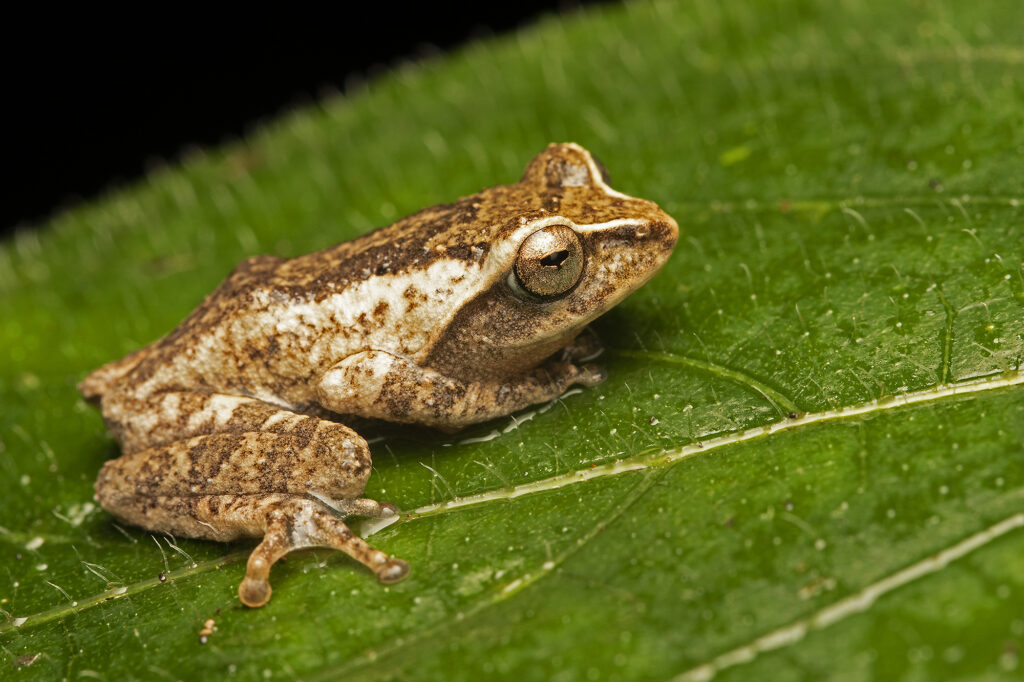
The next one on the list was another critically endangered frog, Pseudophilautus Puranappu, commonly known as Puranappu’s shrub frog. Named after Sri Lankan freedom fighter who fought against British army heroically.
Next destination was the magical knuckles hill. This one of the most picturesque drive and knuckles hill is beautiful beyond imagination. This is amazing to know in such a small island country there are not only diverse amphibians and reptiles species but also a diverse landscape and ecosystem.
Low land rainforest like Runakanda, Shinharaja are completely different than Central Highland Nuwaraeliya and then Knuckles hill are some other kind of magical land. The heavy wind and intense fog welcomed us to knuckles Hill. It looked like an enchanting land directly came straight out of a fairytale. I am not surprised to know this is one of the UNESCO world heritage site. This is one of the significant land as it holds 34% of this island country’s endemic trees, shrubs, and herbs, which are only found here.
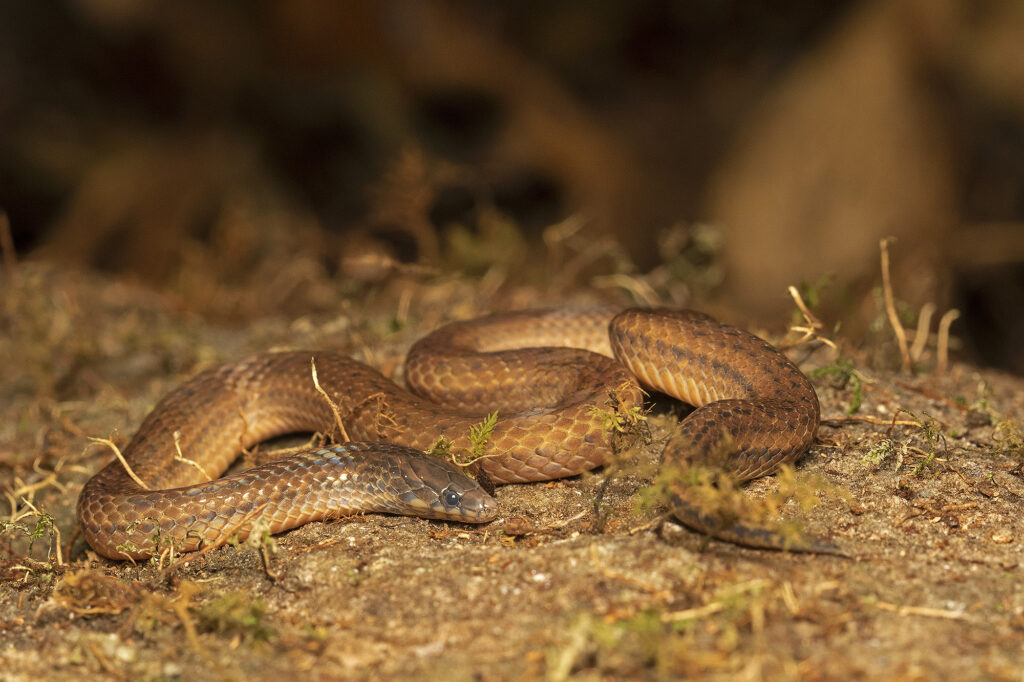
At first we got to see Aspidura Desilvai or commonly known as DeSilva’s Rough-Sided snake. Yet another endemic to Sri Lanka and same time critically endangered. This Snake was described as recent as 2019 and is the latest described species in its genus. This is the ninth species from the genus Aspidura known from Sri Lanka.
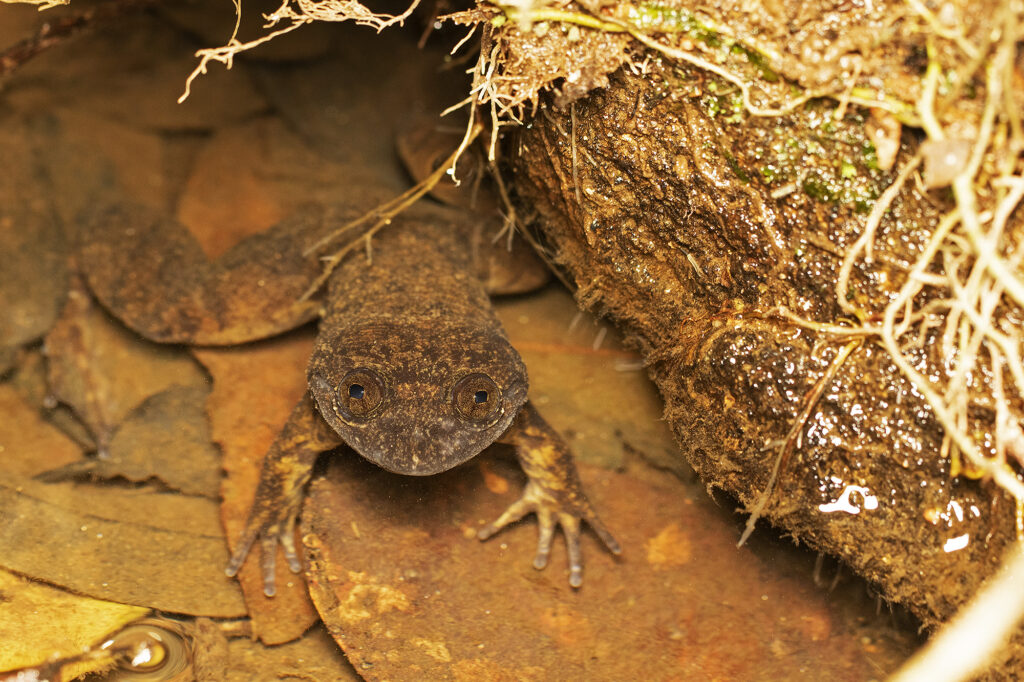
Next one is Lankanectes pera, the second species of Lankanectes. The other one, which I had put at the beginning of this blog. Thats was the first species I saw in this trip. This one is bit larger than its low land cousin. It made me run for my image. The moment I would lift my camera to make an image, it would slide back into the rocks.
Herping in knuckle’s montane forest is one of a kind experience. As mentioned earlier, I landed there with complete dryness, which made it even harder to locate the species. That evening in knuckles is such a memorable time for me, with heavy wind blowing in complete foggy and smoky weather. It was mix of beauty, adventure and eerie feeling when your torch light cuts through atmosphere.
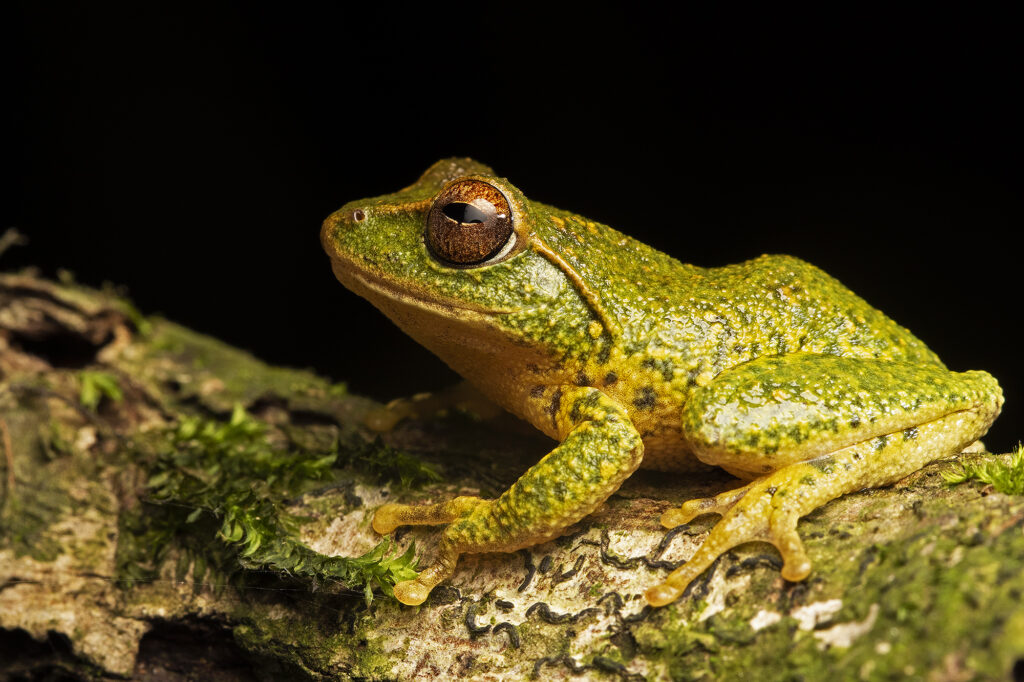
The next one what we saw is another variation of one of the species back in central high land. This is Pseudophilautus stuarti which is a cousin species of Pseudophilautus viridis that I have mentioned already above in my central highland section. This as well separated due to difference in elevation as the Mahaweli River valley separates them.
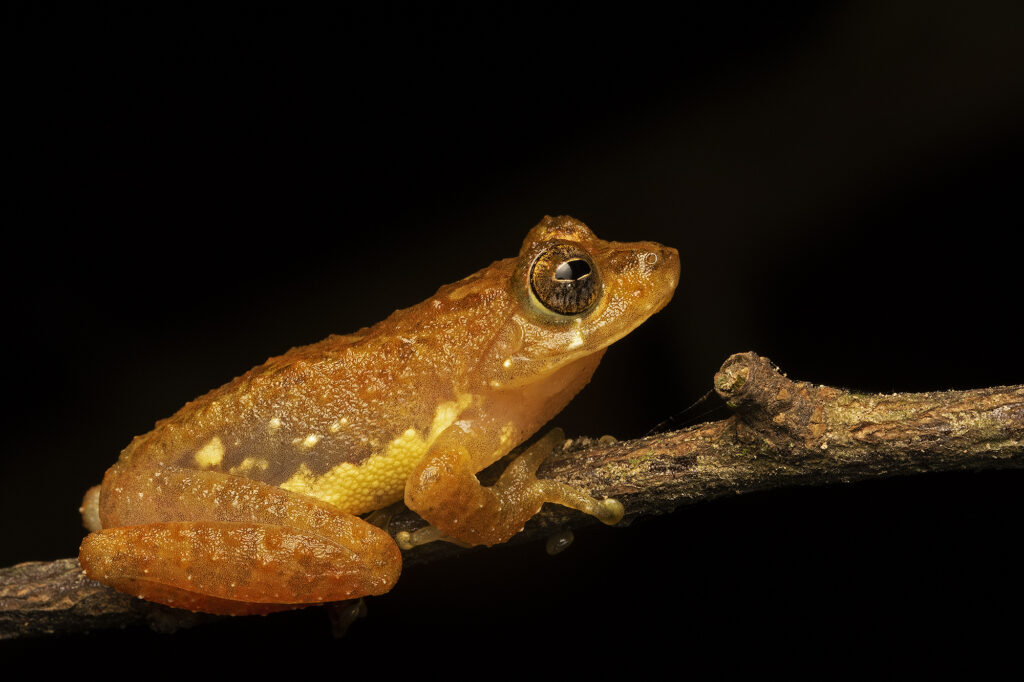
Then comes the Pseudophilautus Sarasinorum or commonly known as Muller’s shrub frog Another endangered species and endemic to Sri Lanka. This species is a master of camouflage, wether its decaying leaf litters or boulders along the stream. When disturbed, they can directly jump into the stream.
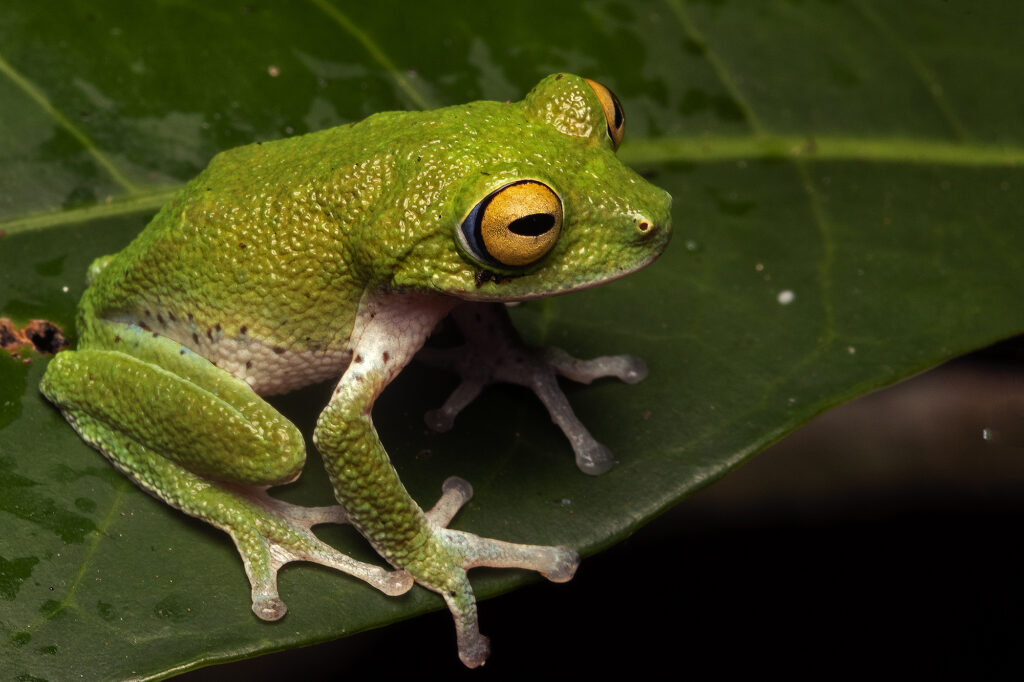
Then comes the star of the night. We, specially Chanaka, had really worked hard to find this. Pseudophilautus mooreorum or commonly known Moore’s Shrub frog. There was a point when I had given up by seeing the increasing intensity of the wind and fog. The night already seemed quite spooky and haunted due to its atmosphere. It seemed like nothing bothered Chanaka. His only focus was to find this one. After walking and hiking a bit around here and there, we discovered it sitting on a bush next to the path in open space. What a beautiful creation of nature. Nature can be so creative, one can make out by seeing the coloration and pattern of this one.
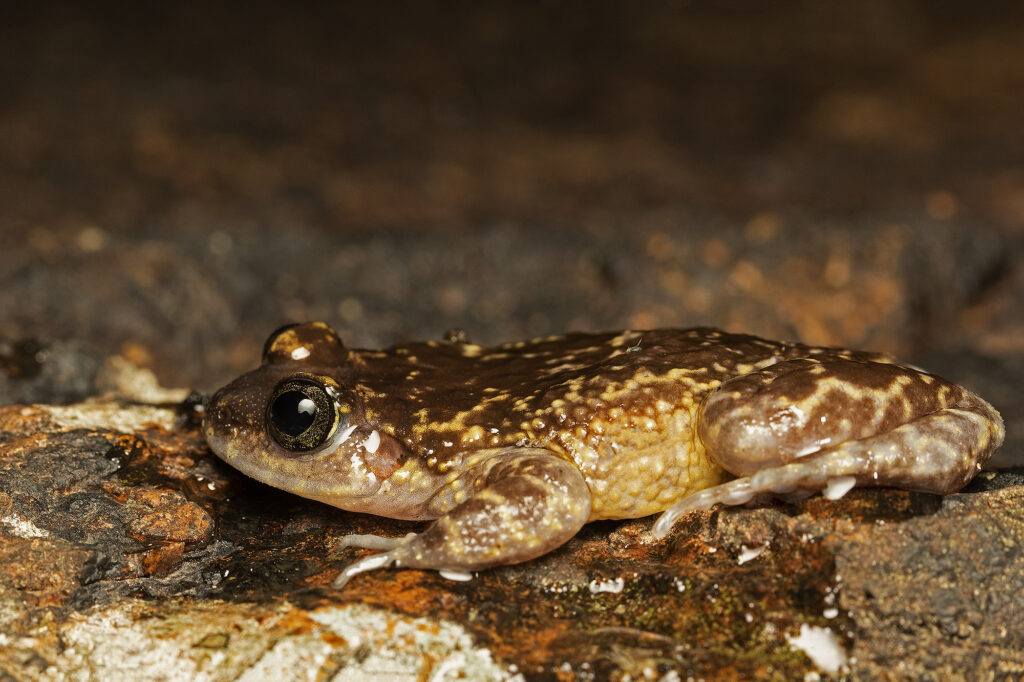
The last attraction of the night was Nannophrys marmorata or commonly known as Kirtisinghe’s rock frog or marbled streamlined frog. To see this we need to walk a little inside the scrubs and then comes a huge monolithic rock. At least that’s what it seemed in the dark of the night. By now the wind speed had already increased. The fog started to scatter . Along with that our torch light now failed to penetrate well among the thick fog. All this together gave me a bit of an odd feeling and I was eager to go back. The fear of unknown territory added to it. After we climbed a bit, there was a big hollow on that rock where water had accumulated like a tiny pond. So many of these Marbled streamlined frogs were scattered everywhere. They are very unusual looking frogs with a slender body that was so narrow that it can very swiftly go inside the crevices. It was really tough to photograph them as they were very fast to move away with slightest movement.
In this trip to Sri Lanka I was able to photograph 56 species of Reptiles and Amphibian, out of which 50 are endemic to the Island country. That shows how unique the species are to the place. Same time the heart breaking fact is almost 90% of them are endangered or critically endangered conservation status. Total 67 valid Sri Lankan Pseudophilautus were there, out of which only 48 continue to survive, the rest – extinct. The major and one point reason is habitat destruction and fragmentation. This is not only story of Sri Lanka but is replicated in other place on our planet. I am glad that I got to see them now but our generations to come will not be able to see them. It might sounded a bit selfish, but we don’t have an option now. I suppose it’s already too late. We are much into the Holocene, the 6th mass extinction. Though it may not be officially declared as a mass extinction, but the current rate is thousand time greater than normal extinction rate. And it is evident that human impact on the environment is the leading cause of this inflating rate.
This reminds me of the book “The Sixth Extinction” by Elizabeth Kolbert. Please have a read when you get a chance.